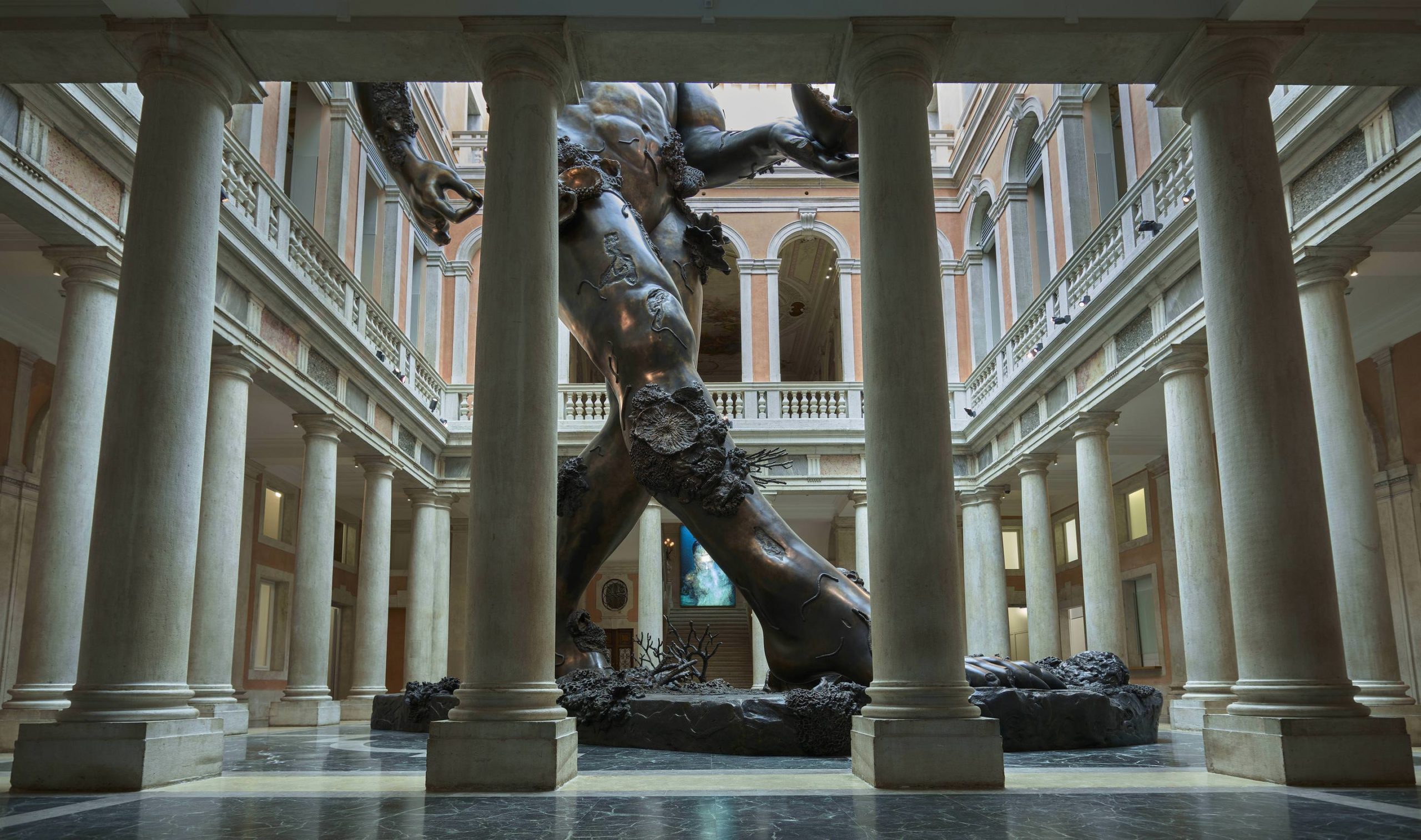Covering the walls and ceilings of the top floor of T Fondaco dei Tedeschi is Italian artist Loris Cecchini’s “Waterbones.” Curated by Hervé Mikaeloff, the site- specific project, on view during the Venice Biennale, is composed of thousands of moveable thin steel modules, a nod to algorithms found in nature and industrial design materials. Whitewaller spoke with Cecchini about the project and its ability to dance in space.
WHITEWALLER: What was the starting point for “Waterbones”?
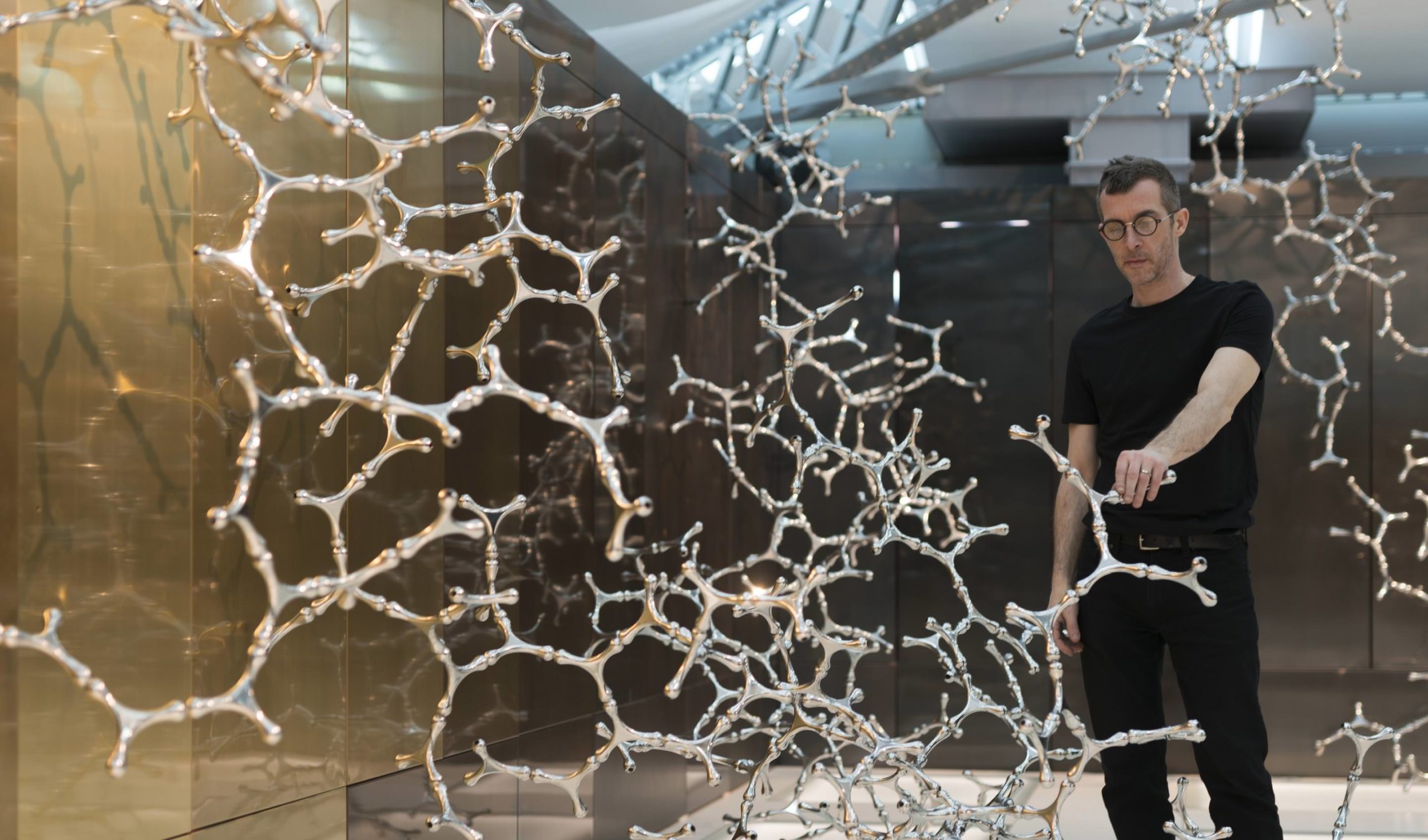
Loris Cecchini portrait by Matteo De Fina
LORIS CECCHINI: The title, “Waterbones,” underlines the morphological lightness and freeness and appears as a biological metaphor: The cells open and bloom, releasing molecular components in interaction with the space, developing autonomous and self-sufficient ways. The installation is composed of eight thousand identical elements in shiny steel linked together. The structure is continually varying thanks to the element’s hookup system. The particularity stands in the geometry of each element and in the fact that they are internally empty: This creates a great lightness in the overall structure that gives me the possibility to expand and contract the form in an organic way, almost as if it were becoming a biological element. The final result is a great “dancing” form in the space that is offered in continuity with the architectural structure.
WW: Your work often interacts with site- specific architecture. How did you want to engage with T Fondaco dei Tedeschi?
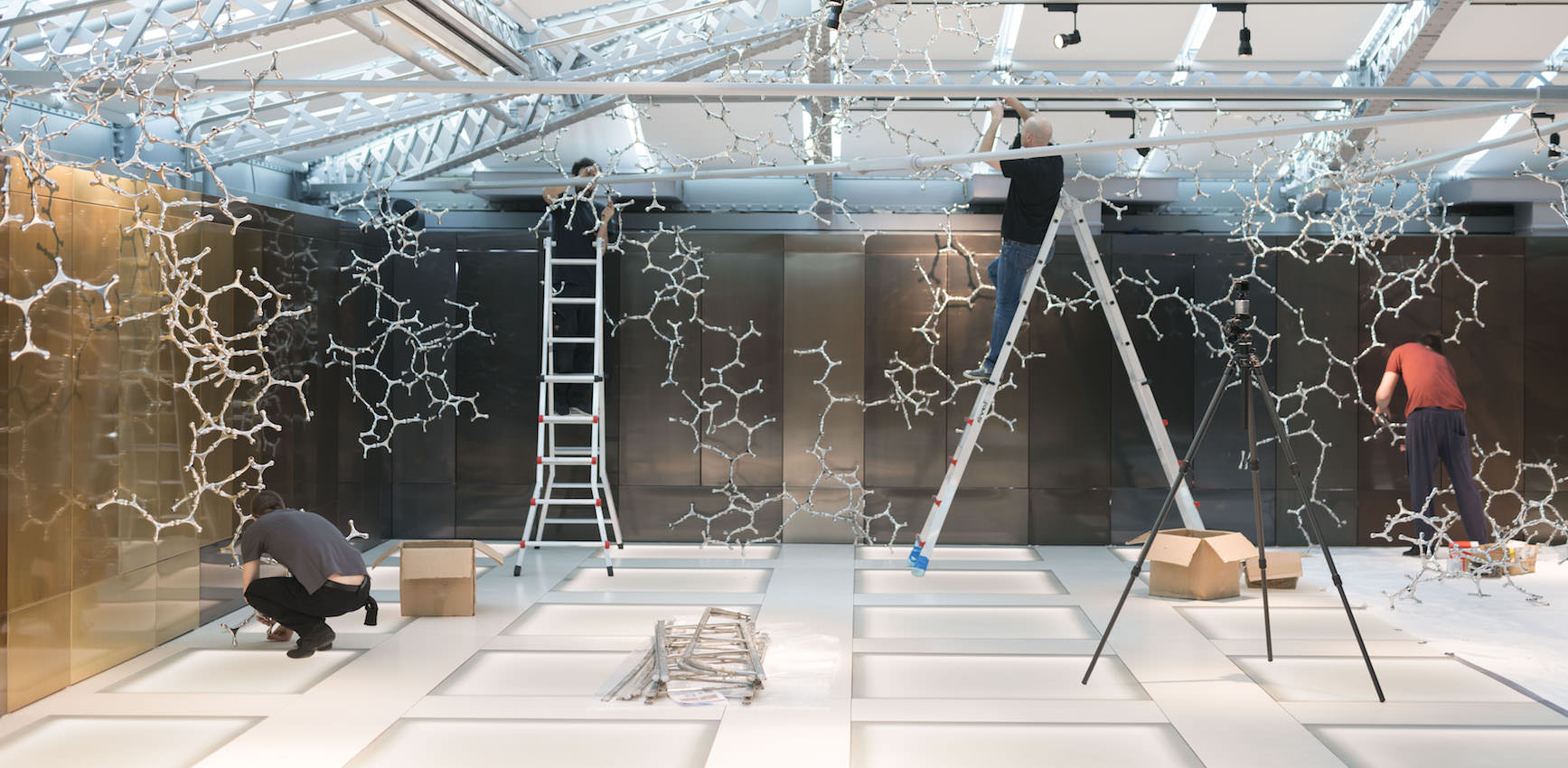
Installation in process, photo by Matteo De Fina
LC: The Fondaco’s Event Pavilion reminded me of the architecture of a greenhouse: I really like this kind of transparent construction, which is usually used for the containment of the plants. I have often tried to formulate a type of work that would show a direct relationship with natural forms and an idea of linguistic artifice as a cultural answer to this theme. In general, for me the architecture is a source material with which to interact, and I often try to integrate, in mimetic way, my mark to the one already present.
WW: What kind of effect do you want this immersive experience to have on the viewer?
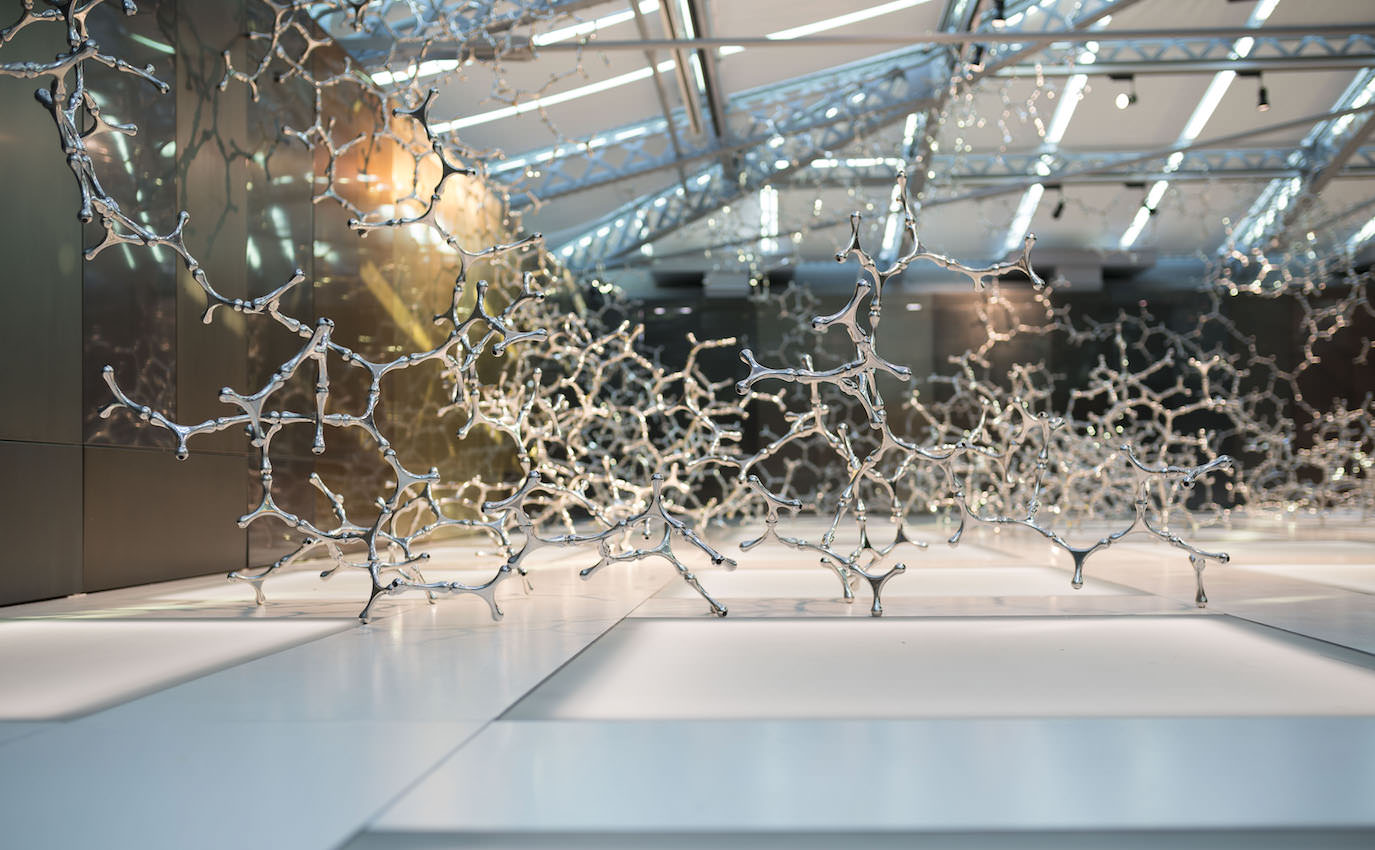
Loris Cecchini, “Waterbones,” photo by Matteo De Fina
Courtesy the artist and Galleria Continua San Gimignano/Beijing/Les Moulins/Habana
LC: I tried to invade the space with a sculptural installation that would physically involve the spectator, wrapping the architecture in an immersive way. The sculpture presents itself from the floor to the ceiling, in different measures of density, which was totally crazy to realize due to the great number of elements involved.
WW: What interests you in translating science and nature into a poetic experience?
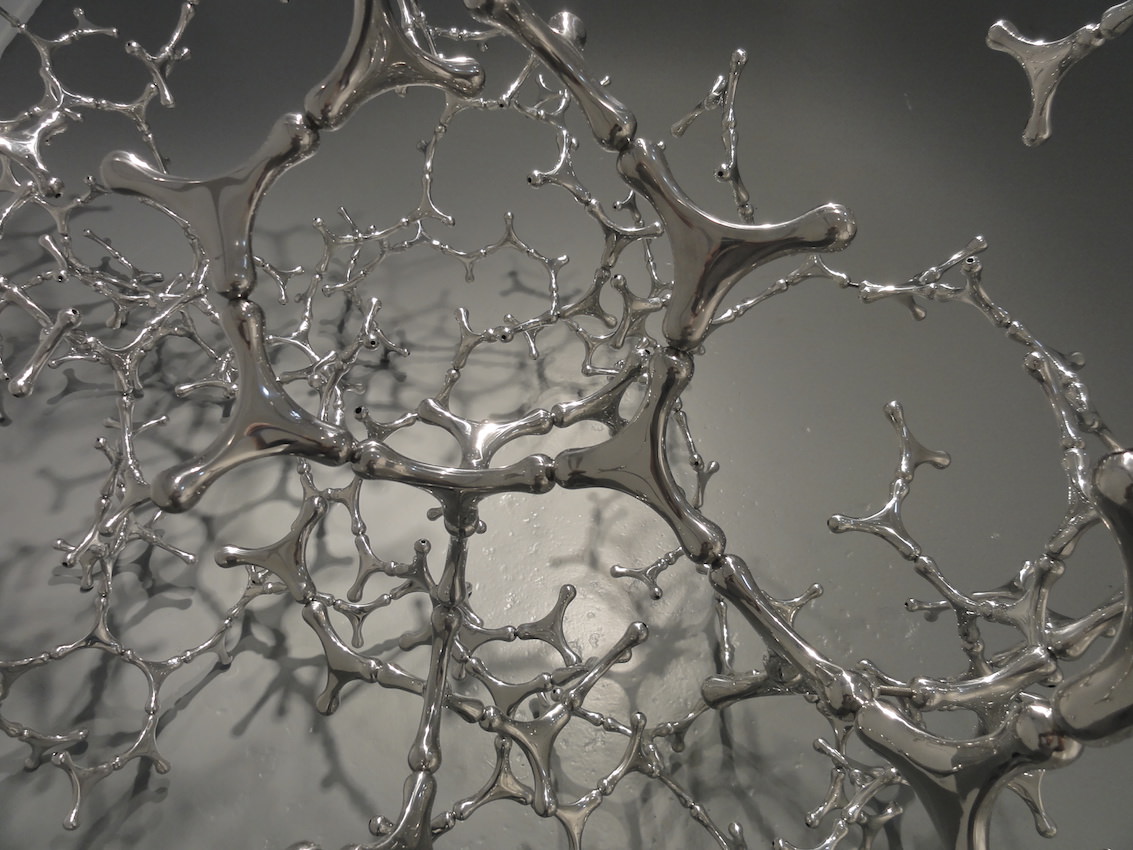
Loris Cecchini, “Waterbones”
Courtesy of the artist and Galleria Continua San Gimignano/Beijing/ Les Moulins/Habana
LC: This relationship is the knot around which the work is developed, a sort of personal translation in which the vegetal memory, the organic dimension, the structural morphology, and the idea of “open scheme” transform the image into an open reading, in virtue of the many possible visual analogies. All of this contributes to a type of “transfiguration” in which the sculptural element becomes a concrete metaphor and at the same time practicable abstraction in which what we imagine of the cellular engineering or of the fractal dimension overlaps with the dynamics of natural growth. In this sense, the overlap of several cultural practices— art and science, nature and technology— becomes the background landscape in which the work stirs.
Pick up your copy of Whitewaller Venice, out this week.
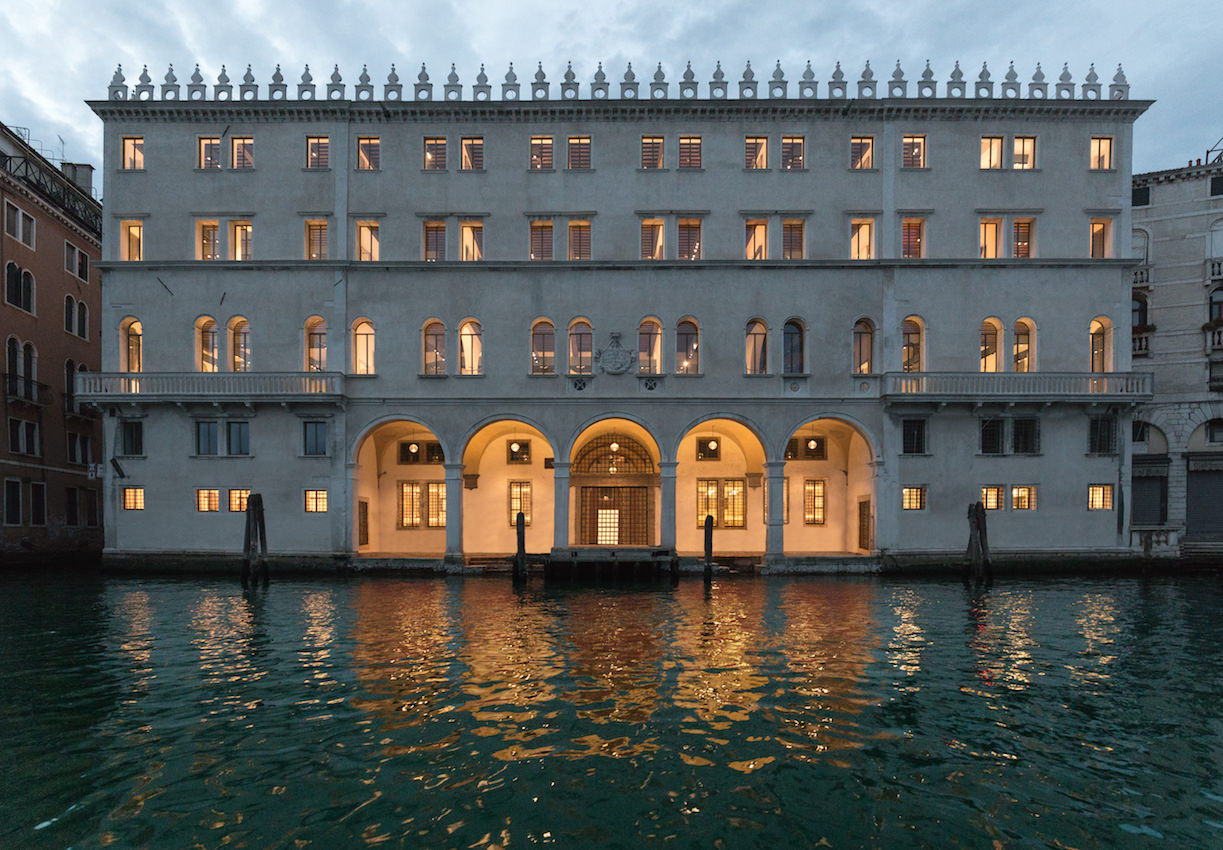
Poto by Delfino Sisto Legnani and Marco Cappelletti © Dfs Group







